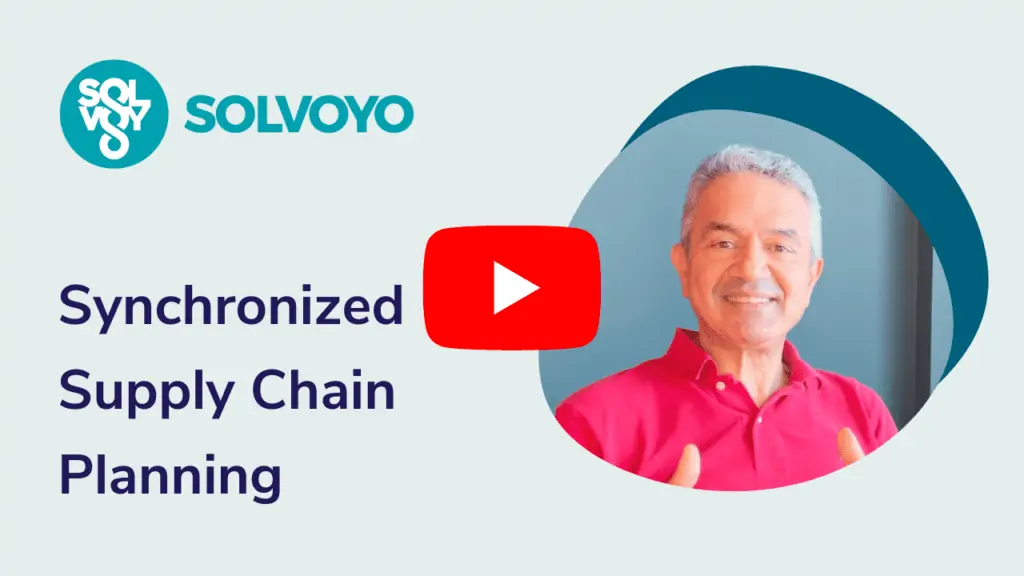“Yes” is a powerful word.
We all enjoy hearing the answer “Yes” to all our requests, especially in business. But is it possible to receive a positive response all the time? Unfortunately not. The reason behind this is the trade-off concept which is at the core of almost all business decisions.
Supply Chain is a core business function tasked to simultaneously manage multiple business operations such as production, inventory, order fulfillment, and transportation.
Managing trade-offs between different supply chain functions is a real challenge as each unit tends to operate in a silo, and each silo has at least one competing objective with one another. Otherwise, it would have been so easy to ignore the cries of the fulfillment department and reduce inventory by halting purchasing to make the inventory department happier. Or, to reduce transportation costs, it would have been acceptable to order less frequently and build more inventory.
Well, the world does not work that way.
In the supply chain world, planners are expected to be superheroes. They are expected to increase availability while reducing inventory investment, production, and transportation costs at the same time. How can they manage all this simultaneously? The answer is through concurrent planning.
What is concurrent planning in supply chain?
Concurrent Planning optimizes orders, inventory, and transportation simultaneously and in one plan. Rather than sub-optimizing a siloed operation, you optimize the entire enterprise.
Concurrent Planning should not be confused with making plans independently for each function and stitching the results together, as the traditional solutions do.
What if you want to optimize for more than one goal? For example, you might want to optimize your plans to produce the highest profit margin and minimize transportation costs. It is unrealistic to produce a high volume of products to increase production efficiency and expect low-budget inventory holding costs. The production manager and the inventory planner will thus have conflicting requirements, and neither of the two functions will want to miss their target KPIs. They both want to receive a “Yes’ to their action plan, but it’s difficult for a manager to give them both the green light.
Here is the question: If each function has its planners and organizational structure, how can a leader say “Yes” to each function and still achieve the best results for the business? There is only one way: using advanced analytics and concurrent optimization.

Concurrent Optimization enabled by Cloud technology might be a company’s lifesaver
Traditionally, each business function focuses on its objective and plans its supply chain operations accordingly. How does a business perform concurrent optimization? By combining each function’s objectives under one overarching objective and reflecting them on the individual KPIs, the company can uncover solution options that they may never have considered before. The concurrent supply chains are made possible by high-tech software platforms that plan a supply chain using a multi-objective discrete optimization technique with goal programming. Concurrent optimization models enable changing objectives as a dynamic parameter, resulting in a more agile technology that can adjust to the changing business needs. Goal Programming optimizes for more than one goal at a time and constructs solutions by addressing multiple goals for the best overall result. The company follows the market dynamics and adjusts its short- and medium-term objectives to create a competitive advantage against its competitors. The company is thus able to prepare for coordinated actions across its functions.
The easiest way to be a hero – turn failure into success with Machine Learning powered Concurrent Optimization
One top consumer electronics manufacturer which serves its 1,300 retail stores used to have separate functions across several silos for prioritized inventory allocation, credit checks, fulfillment, and transportation planning. Each function maintained its own KPIs to execute its operations efficiently. This working method resulted in low fulfillment performance (measured as On Time In Full, or OTIF) and high transportation costs. So, what miracle turned this situation into a success story?
You guessed right: Concurrent planning of prioritized inventory allocation, credit checks, fulfillment, and transportation planning combined with scenario planning.
Initially, the company focused on transportation optimization to minimize delivery costs and increase planning efficiency, resulting in 3.5% savings in transportation costs. It was an improvement with real value, creating a success story and confidence to take on concurrent planning.
As a second phase, the concurrent planning model included prioritized allocation, fulfillment, and credit checks. Three optimization objectives -maximize sales, maximize margin and minimize transportation costs- are combined under goal programming. At the same time, the inventory investment and OTIF targets are met, and the whole planning process is automated. Daily, transportation costs are balanced against inventory investment and total margin ideally by optimization algorithms supported by machine learning. All departments reached and even exceeded their KPI target levels over time. The total transportation costs decreased by 18% from the base, the inventory investment was reduced by 30 million USD, and the OTIF targets were met consistently. After a successful change management effort, the daily automated process settled down, convincing each department to work with the new automated process and focus only on the exceptions.

Another real-world example is a multi-billion-dollar retailer that wanted to synchronize its product flow from 700+ supply locations through 30+ DCs and cross-docks to 2000+ stores.
The home retailer had conflicting KPIs among functional silos. While store operations planned for high availability through more shipments, logistics aimed to reduce costs through frequent FTL shipments. At the same time, the inventory management’s KPI was to reduce inventory investment in the network.
Each retail season, the planning managers need to decide on:
- How much inventory to keep at the store to meet target service levels
- How much to budget for transportation and expediting
- How to flow the product to the store — ask for direct delivery from the vendor or consolidate trucks at regional DCs or cross-docks
- For which transportation mode to buy capacity — parcel, LTL, multi-stop trucks, dedicated fleet, spot purchase, etc.
You can easily see the common trade-off here: more frequent delivery of small quantities results in lower inventory and higher transportation costs. In contrast, less frequent delivery of consolidated trucks results in lower transportation spend but requires more inventory investment at the store to protect availability.
The fixed order schedules and static transportation planning limited the ability to respond to seasonal or structural changes.
The home retailer had a Diverse SKU portfolio, and the vendor capabilities requiring different operating models and planning parameters were a disruption against their supply chain operations.
Having these challenges, the home retailer aimed to minimize the supply chain network’s total cost while ensuring that SKU x Store availability targets were met.
They were looking to optimize the order quantity by considering the trade-offs between inventory holding and transportation costs.
After achieving Concurrent Planning of Inventory, Fulfillment & Transportation, the home improvement retailer achieved a 105 million USD saving of recurring inventory and transportation costs while maintaining store shelf availability.
To conclude, concurrent planning is here and real, with demonstrable results. You just need to find your concurrent planning case, say “Yes” to a test-and-learn opportunity, and enjoy the benefits that only concurrent planning can uncover.
It is easy to say “Yes” to the opportunity to become an immediate hero at your company.









